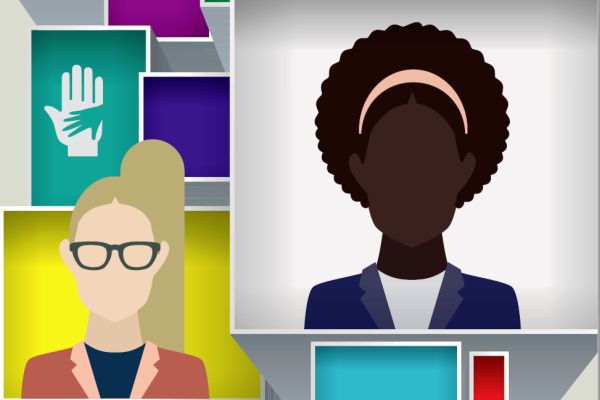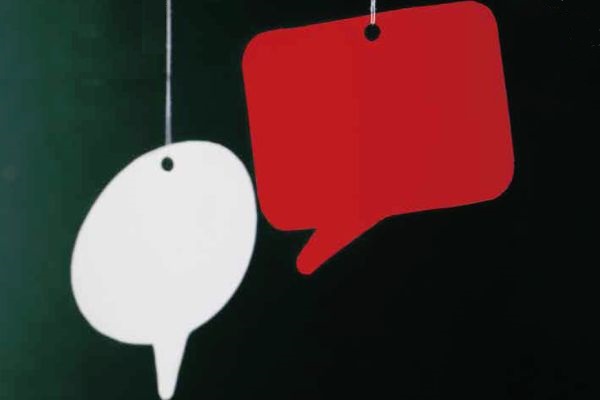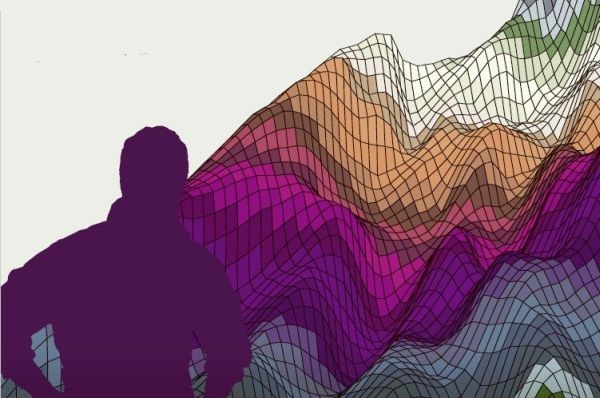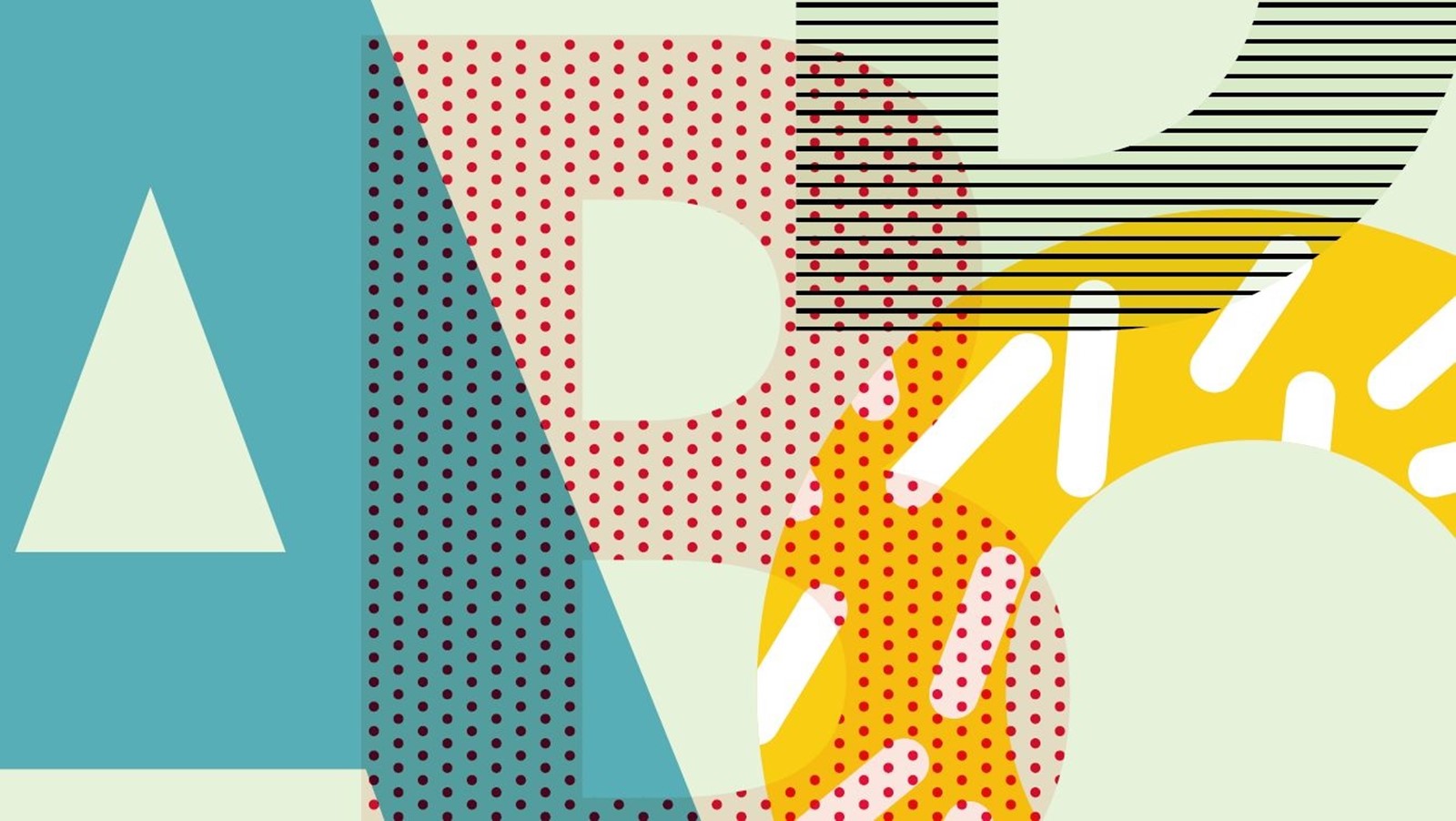In 2014, I was employed to run a project supporting LGBTQ+ (lesbian, gay, bisexual, transgender and queer, plus all other minority sexuality and gender identities) unpaid carers in Hackney. It was the year that same-sex marriage was legalised in the UK and my mood was jubilant and hopeful. I watched the footage of those first few couples walk hand in hand down the town hall steps, and I imagined the countless people before them who had kept their love secret and lived in fear, or resigned themselves to a life of loneliness. I thought of all the people over the years who had fought to get us here, and I cried. This was never just about marriage for me – it was a sign that at last we were accepted; at last, we belonged.
I was naïve. And by the end of my first year in post, my hopeful jubilation had been replaced by a fire in my belly that has not diminished as the years have gone by. There has been monumental progress, it’s true. But until I started talking every day with LGBTQ+ people from all walks of life, I didn’t realise how far we still have to go. I listened as people’s stories spilled from their lips into the room and each person and each story stayed with me, and each in a small way changed me. I was determined to use whatever small power I had to effect the change I wanted to see.
Sara* was not given the correct aftercare information following her hysterectomy because she was gay and her doctor had assumed she did not need it. She contracted a painful infection, which took many weeks to recover from and seriously impacted her capacity to care for her partner. Anoop* and his partner Niki* were experiencing homophobia from the care workers who came into their home, and eventually they refused all services, leaving Anoop to do everything. When I met him, he was at the point of complete exhaustion. Lillian* is in a polyamorous relationship and had sought counselling to help her cope with caring for her partner who has an addiction. Lillian’s counsellor pathologised her polyamory, leading each session back to this and leaving Lillian feeling unseen and defensive, and her needs unmet. She left therapy and didn’t want to see anyone else. These weren’t isolated and unusual cases. Nearly everyone I met had a story like this to tell. A recent survey found that one in six respondents (out of more than 1,000) in the UK agreed that people who engage in same-sex relationships should be charged as criminals.1
I was shocked. The way I saw it, there were two problems: prejudice and ignorance. Prejudice is founded upon ignorance, but ignorance does not necessarily denote prejudice if we define prejudice as ‘an unreasonable dislike of a particular group of people’.2 We can conclude then that not all those who had caused harm had meant to do so. I developed an awareness-raising training, and was able to offer it free to public and third sector organisations in and around Hackney. In addition, I argued for the continued need for LGBTQ+ specific services, and subsequently set up LGBTQ+ coaching service, Out and About, offering life coaching and peer support to LGBTQ+ people aged over 50 in Hackney. The project broadly aims to prevent and reduce social isolation in the older LGBTQ+ community, although I work with people on a wide range of issues relating to that.
One day a new client came to see me within a different service. She sat down in the chair opposite, and as she was talking, I realised that she was about as different from me as you could get. She had a different sexuality, religion, ethnicity and culture to me, and she was of a different generation. In that first session, it felt like the only thing we had in common was that we were both women. And even here we differed greatly on what being a woman meant to each of us. The area she wanted to work on brought up lots of complicated and conflicting feelings in me. I panicked. That feels uncomfortable to write, but it was true. How could I help this woman? Could I come anywhere near to understanding what the world looked like from her position? Had I done enough work on my own assumptions and prejudices so as not to allow them to affect our work together? Was I skilled enough to establish a good working alliance? I felt momentarily lost at sea.
And then the thought came to me – I work with difference and minority identities every day! Granted, I didn’t know much about her particular minority identities, but I had a wealth of transferable experience I could draw upon to support me. I consciously inhabited my way of being with my LGBTQ+ clients, and instantly felt as though I was back on solid ground again. We proceeded to work well together and, as is usually the case, I found that, as the former Labour MP Jo Cox famously stated: ‘we are far more united and have far more in common with each other than things that divide us’.
Reflecting on the session, I set about organising my experience into distinct qualities that could be of use to other coaches finding themselves sitting opposite someone who at first glance seems very different from themselves. What I came up with was the ABCD of Working with Diversity©, which is an acronym for Assumptions, Barriers, Check your privilege and Discuss your difference (if appropriate). I expand on each of these below.
Assumptions
Firstly, what assumptions do you have about them? It is impossible to make it through childhood without absorbing at least some of the prejudices that exist in our society, but assumptions can hinder our ability to understand and enter into a client’s world. Our aim here is to engage with and question our own assumptions, thoroughly, but if possible without self-recrimination. In order to support you in this process, you might want to use the Socratic method3 often used in coaching, and marvellously applicable here too. The three questions I like to use are:
- Is there any evidence for this belief/assumption?
- Is this belief or assumption logical?
- Is this belief or assumption helpful?
Secondly, what assumptions might they have about you? Be mindful of power imbalances that might exist (man/woman, white/black, able bodied/disabled, majority/minority etc) and how you might dismantle them in the coaching relationship.
Barriers
Consider any additional obstacles your client may be facing in order to reach their goals. For example, limiting beliefs they have about themselves that relate to their identity, the impact of discrimination on their resilience or motivation, or the chronic stress associated with having a minority identity.4 Your client may be aware of these and countless others, or they may not. If they are not, it can be very helpful to explore this together. In my experience, having this understanding can not only be empowering, but can cultivate self-compassion too, as we acknowledge the external forces at play in our lives and on our psyches.
Check your privilege
This is not about ‘who of the two of us is more or less privileged?’. There are many aspects to privilege and we want to be thoughtful about these. Some facets of privilege are gender, gender identity, sexuality, ethnicity, age, class, education, mental or physical wellness and ability, perceived attractiveness, religion and wealth. Think about the privileges you have had that resulted from factors outside of your control: where you were born, who you were born as, into which family, and what kind of upbringing you had.
This can be tricky because if we are in the majority, the situation can just seem normal to us. Sometimes we need something to compare our experience with in order to appreciate the privileges attached to being in the majority. Take heterosexual privilege, for example. Unlike LGBTQ+ people, a heterosexual person usually:
- is guaranteed to find other people of the same sexual orientation at their place of work
- can walk in public with their significant other and not have people stare or comment
- doesn’t feel nervous revealing their sexuality if they work with young children, due to the (mistaken) connection between their sexuality and paedophilia
- does not find their masculinity/femininity called into question because of their sexual orientation
- is never asked to speak for everyone who is heterosexual
- is never told that their individual behaviour reflects on all other heterosexual people
These are just some examples. Any one person will have multiple facets to their identity, and each identity will hold greater or lesser privilege. I sometimes check my privilege when I find myself feeling frustrated with a client’s lack of progress, for example, or dismissive of their predicament. In these instances, I might ask myself: ‘Am I feeling this way because I am approaching this from a position of privilege?’ and then, ‘Is it possible that I am making assumptions about this person from my position of privilege, or overlooking the barriers they are facing?’
On the other hand, if you are sitting opposite a client and find yourself feeling inferior, resentful or envious of them in some way, it can be useful to think about your experience in terms of privilege as well. Perhaps in this instance your reaction has been sparked by a facet of their identity that you perceive to be more privileged than your own. When we talk about privilege, we are talking about inequality. And inequality can be as painful as it is maddening. What I find helpful about this perspective is that it frames individual differences within the wider context of social inequality.
Discuss your difference (if appropriate)
When might it be helpful and appropriate to discuss the differences between you and your client, with your client? If your heart rate jumped ever so slightly reading that, I am with you. I find this prospect daunting. I also happen to think that it is centrally important, even necessary. If your gay client is saying he has reservations about coming out at work because he fears he will be judged, you can be sure he might also be wondering if you are judging him.
The ‘discuss our difference’ conversation is one I find myself having regularly, working as I do with people aged over 50 and therefore much older than I am. Often people talk about feeling dismissed, overlooked or infantilised by younger generations. They might say something like: ‘They (the young) don’t understand what it is like to be me, or perhaps they just don’t think, or don’t care.’ At this point I might say something like: ‘As you were saying that, I thought about the differences in our ages, and I wondered how you feel about seeing a coach who is from that younger generation.’
My aim here is to make the implicit explicit. I want to bring the doubts and fears they might have about working with me out in the open, so we can talk about them together. Some clients will take this up, and we will explore it further in the context of our relationship. Others won’t, and that’s fine too. My hope is that by bringing our difference into the room, I have made this a permissible subject for discussion, which we could come back to later.
Of course, your client might not mention your difference at all, even subtly. In this case, it might not be relevant to bring in, which is why this stage of the model is an optional one. It is useful only where it is appropriate.
This is a deceptively simple model for a hugely complex and nuanced area of work. Nothing can compare to engaging deeply and meaningfully with our relationship to our own and others’ differences (and sameness). Much of this is only semi-conscious or even unconscious and so I would recommend attending a group or training to facilitate this process. Find an environment where you feel supported, because this work can feel disorientating. Most people do not like to think of themselves as having prejudices, and it is a horrid shock to discover that you are not immune to the social conditioning of your culture or environment. Rather than being a stand-alone model, I hope that this can be an ‘in the moment’ reminder of some of the key ideas to hold in mind in your work.
If you are reading this and thinking, ‘That sounds great, but my client’s sexual orientation is not relevant to the kind of coaching I do’, I urge you to think again. At first glance, Louise* wanted coaching to find work that was more fulfilling. Going deeper, we discovered that her fear of being rejected by a new team was preventing her from moving jobs. A quarter of lesbian, gay and bisexual workers reported experiencing bullying at work because of their sexual orientation.5
Peter* wanted coaching to help him manage his anxiety during job interviews. It emerged that his anxiety had increased dramatically after he had experienced a hate crime some years ago. One study reported that one in five of LGBT+ people surveyed had experienced a hate crime in the last 12 months.6
I worked with Lee* on low self-esteem and self-confidence. She was bullied at school and was made homeless when her parents found out she was gay. Nearly half of LGBT+ pupils are being bullied in our schools7 (this figure used to be even higher), and as many as one in three of the UK’s homeless young people are LGBT+.8
For many LGBT+ people, there is still a clear message. Be strong or be small. Get good at fighting or get good at hiding. Keep yourself safe.
All too often, we hide the most brilliant and beautiful parts of ourselves behind closed doors, like a secret, like something we are ashamed of. Sometimes, we are ashamed. We have internalised the homophobia, biphobia and transphobia of our society. We believed what we were told, when we were too young to know any better. But not everyone who hides their true and full self from the world is ashamed. There are still real and significant risks to the safety, wellbeing and success of LGBTQ+ people. Sometimes, we have to put ourselves on mute, and fade our glorious rainbow colours down to black, white and grey.
There has been monumental progress, it’s true. But we still have a long way to go. As coaches, we have a golden opportunity. We have access to people in positions of power, who can themselves effect great change. And the skills this movement most needs are those of our craft. That is, the skills to widen people’s understanding of themselves and awareness of the impact they are having, to challenge assumptions, strengthen self-regard and enable potential. And not just for LGBTQ+ people, but in our work with every single one of our clients. Can you imagine what we could do, if we uncovered and dismantled prejudice and bias, in the same way that we uncover and dismantle the untrue limiting assumptions our clients have about themselves? If we had the courage to gently challenge those throwaway comments, like using the word ‘gay’ to describe something disliked, or making a joke at the expense of an LGBTQ+ identity? If we could use the power that we as coaches have to tackle damaging beliefs and attitudes, just think what we could achieve.
There’s that fire in my belly again. What about yours?
*Vignettes are composites of client experiences, disguised and anonymised so as to be unrecognisable, to protect identity.
Katharine Collins is a counsellor, coach and group facilitator, and member of BACP and the Association for Coaching. She would love to hear your thoughts and experiences of using the ABCD of Working with Diversity© model, and if you are interested in volunteering an hour a week for the Out and About project to coach an unpaid LGBTQ+ carer, please do get in touch.
More from Coaching Today

Are you the coach you think you are? Different perspectives on coaching behaviour
Open article: Dr Erik de Haan of the Ashridge Centre for Coaching outlines the results of a recent study into the coaching behaviours of executive coaches. Coaching Today, January 2018

Coaching conversations: finding your niche
Open article: In a competitive workplace, it can make sense to identify a coaching niche. But are there also times when it pays to be a generalist? Sally Brown asks leading coaches for the lowdown on finding your USP and standing out from the crowd. Coaching Today, October 2017

Mapping the territory: navigating the journey into coaching
Open article: Maps can provide a useful framework in navigating the coaching process with our clients, but how do we ensure that we are not confusing the map with the territory? Carolyn Mumby explores. Coaching Today, July 2017
References
1 Carroll A, Robotham G. Minorities report 2017: attitudes to sexual and gender minorities around the world. ILGA; 2017.
2 COBUILD Advanced English Dictionary. Prejudice. [Online.] HarperCollins. https://www.collinsdictionary.com/dictionary/english/prejudice (accessed 8 Jan 2018).
3 Beck AT, Rush AJ, Shaw BF, Emery G. Cognitive therapy of depression. New York, NY: Guilford; 1979.
4 Meyer I H. Prejudice, social stress, and mental health in lesbian, gay, and bisexual populations: conceptual issues and research evidence. Psychological Bulletin 2003; 129: 674–697.
5 Guasp A. Gay in Britain. London: Stonewall; 2013.
6 Bachmann C, Gooch B. LGBT in Britain: hate crime and discrimination. London: Stonewall; 2017.
7 Bradlow J, Bartram F, Guasp A. School report: the experiences of lesbian, gay, bi and trans young people in Britain’s schools in 2017. London: Stonewall; 2017.
8 Williams H, Varney J, Taylor J, Fish J, Durr P, Elan-Cane C. The lesbian, gay, bisexual and trans public health outcomes framework companion document. [Online.] Public Health England; 2013. http://boltonshealthmatters.org/sites/default/files/LGBT%20PH%20Outcomes%20Framework.pdf (accessed 13 Feb 2018).
